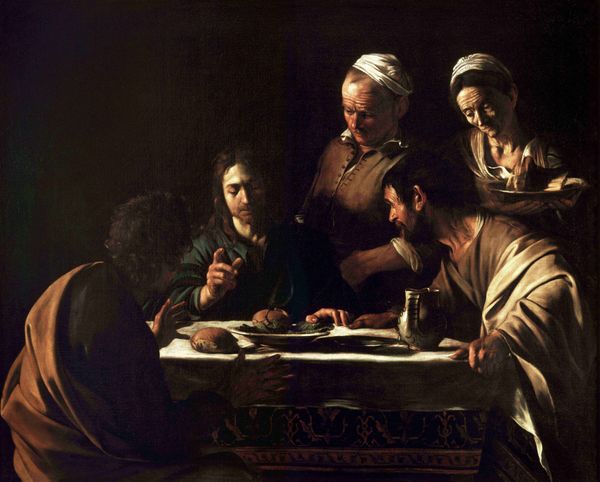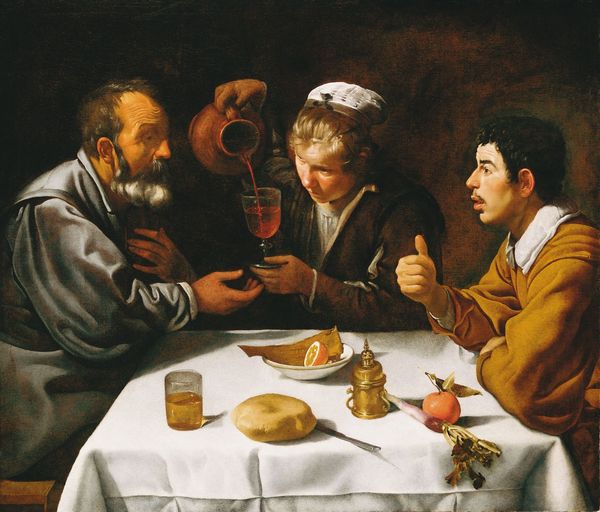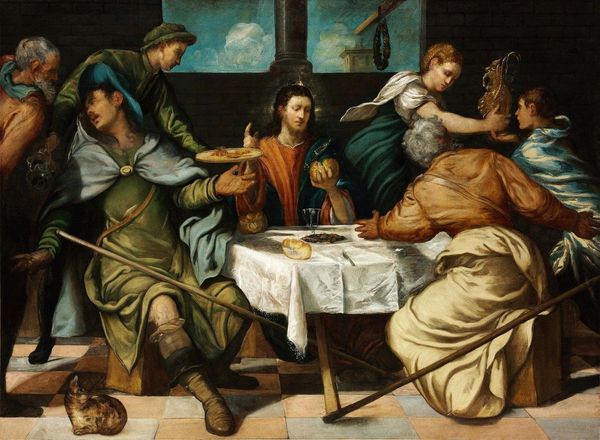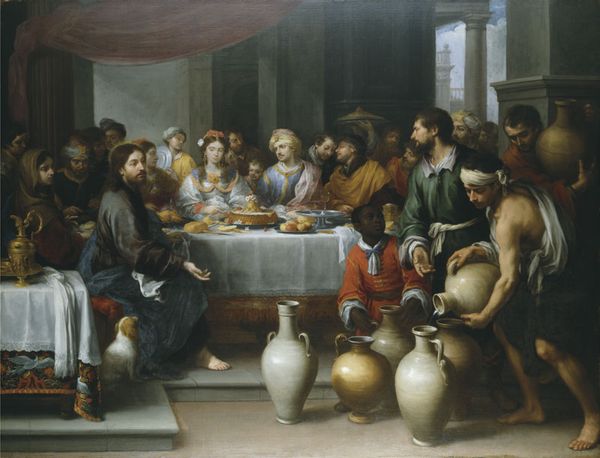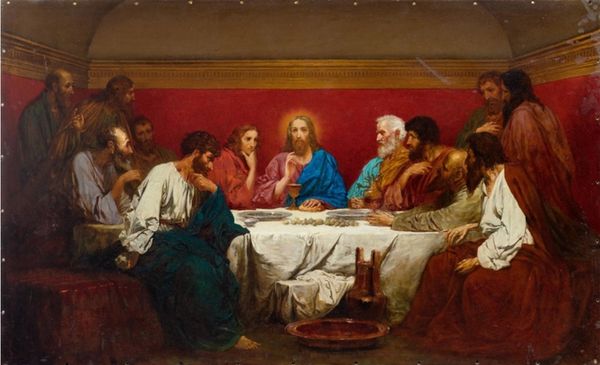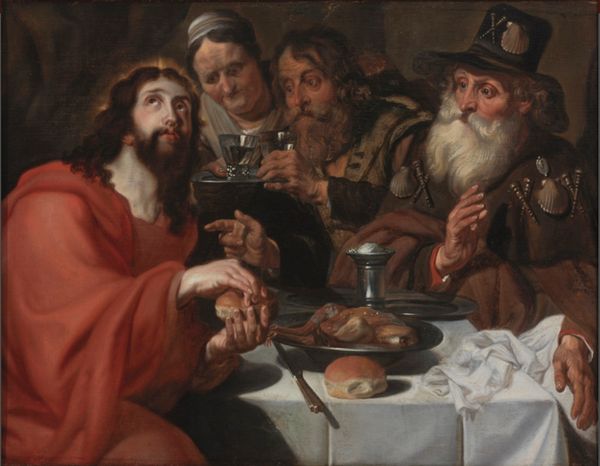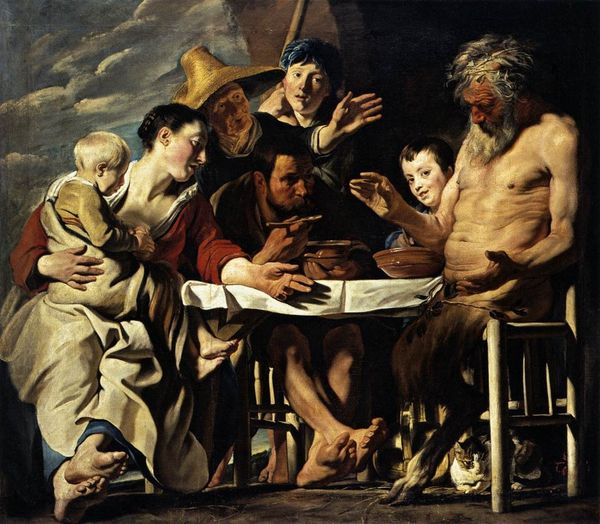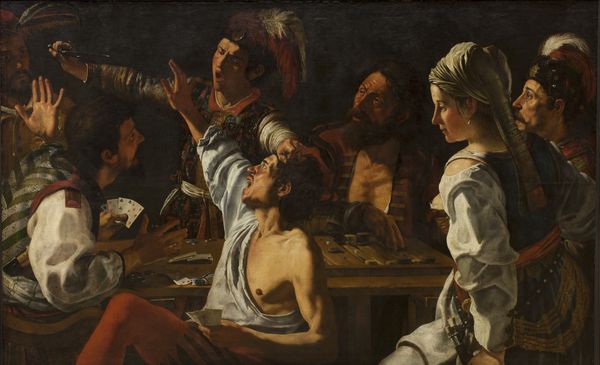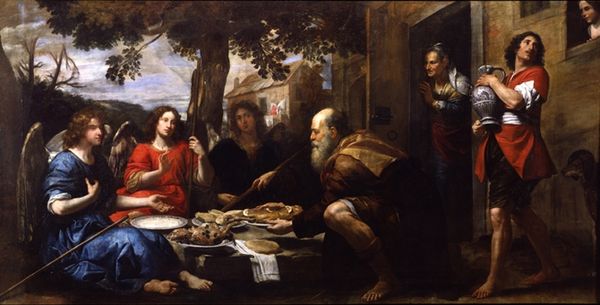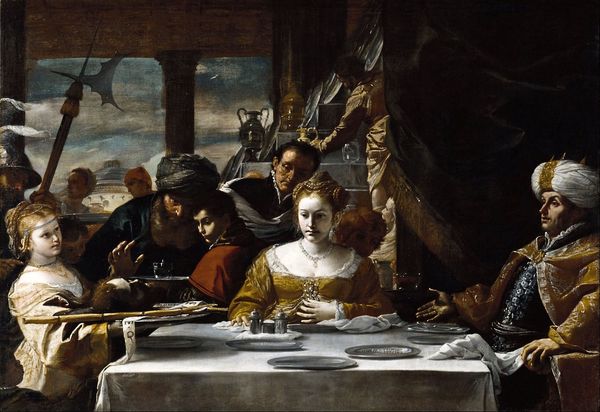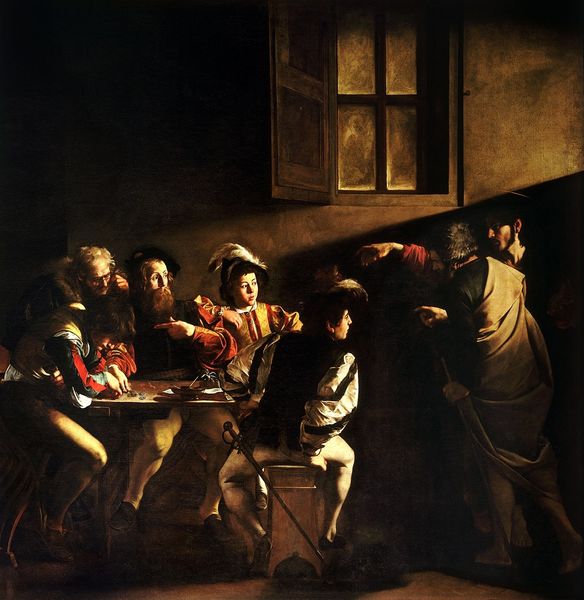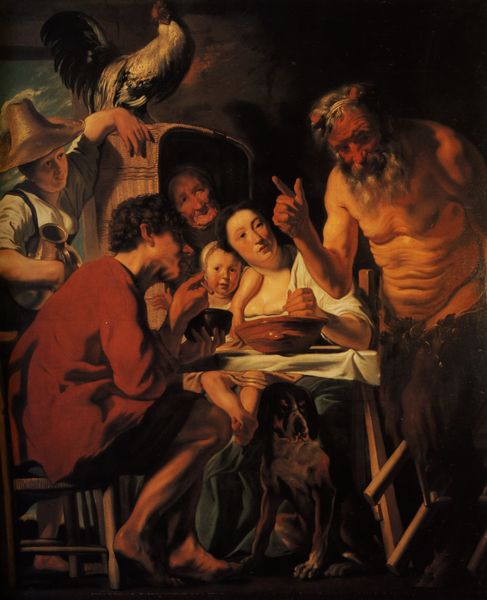
painting, oil-paint
#
narrative-art
#
baroque
#
painting
#
oil-paint
#
figuration
#
oil painting
#
genre-painting
#
italian-renaissance
Copyright: Public Domain: Artvee
Curator: What immediately strikes me about this scene is its raw emotional intensity—almost a visceral shock rendered in oil paint. It is a tableau of astonishment. Editor: And the painting in question is titled "Supper at Emmaus," an oil on canvas rendered circa 1601 by Michelangelo Merisi da Caravaggio, commonly known simply as Caravaggio. Curator: It’s just incredible to witness how Caravaggio, a master of Baroque painting, captures that profound moment of revelation when the resurrected Christ unveils himself to two disciples. See the composition; he frames them around a modest supper. It is not the opulence you might expect. Editor: It feels less divine pronouncement, more…domestic drama. The high contrast—that dramatic chiaroscuro—pushes the figures right to the edge, like they’re about to burst from the frame and drag you into their bewilderment. What's particularly striking about his treatment of light? Curator: Exactly—the use of tenebrism emphasizes that dichotomy between darkness and light. It mirrors the shift from unknowing to recognition within the story. You notice how the light floods Christ's face and hands, becoming a beacon, illuminating not just the scene but the characters' inner epiphanies. Editor: And the figures, they're so…earthy. There's nothing idealized about them. They're just ordinary folk experiencing something extraordinary, their expressions caught somewhere between disbelief and awe. That bloke on the right flinging his arms around looks ready to bolt. Is that real emotion, or theater? Curator: Both, I suspect. That contrast reflects Caravaggio's style, the blend of sacred narrative with real humanity. By setting the event in an everyday setting and painting the figures realistically, he blurs the boundary between the divine and mundane. These are not just religious icons; they are human beings wrestling with a reality beyond comprehension, and he makes it visible for the viewer, inviting us into that moment of recognition and belief. Editor: Well, as ever, Caravaggio stirs it up. Makes you wonder what's lurking beneath the surface of the everyday, doesn’t it? A truly timeless snapshot of a soul-shaking realization, wouldn't you say? Curator: It is certainly that and more. A reflection on our shared humanity and capacity for revelation, hidden within the ordinary moments of life.
Comments
No comments
Be the first to comment and join the conversation on the ultimate creative platform.
